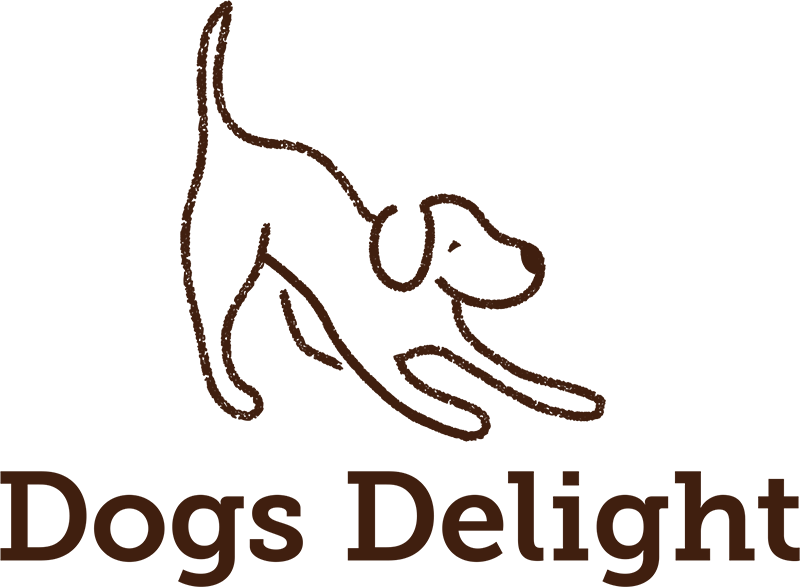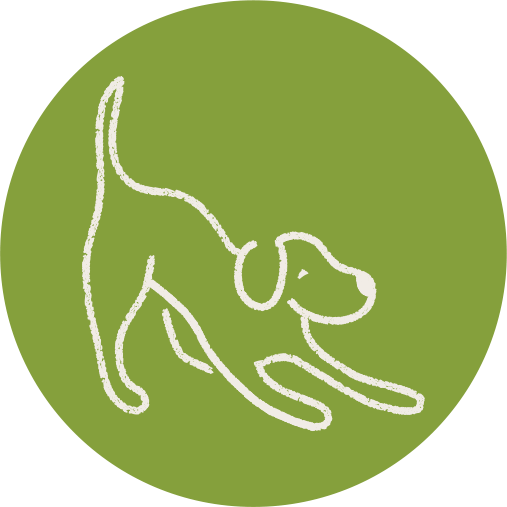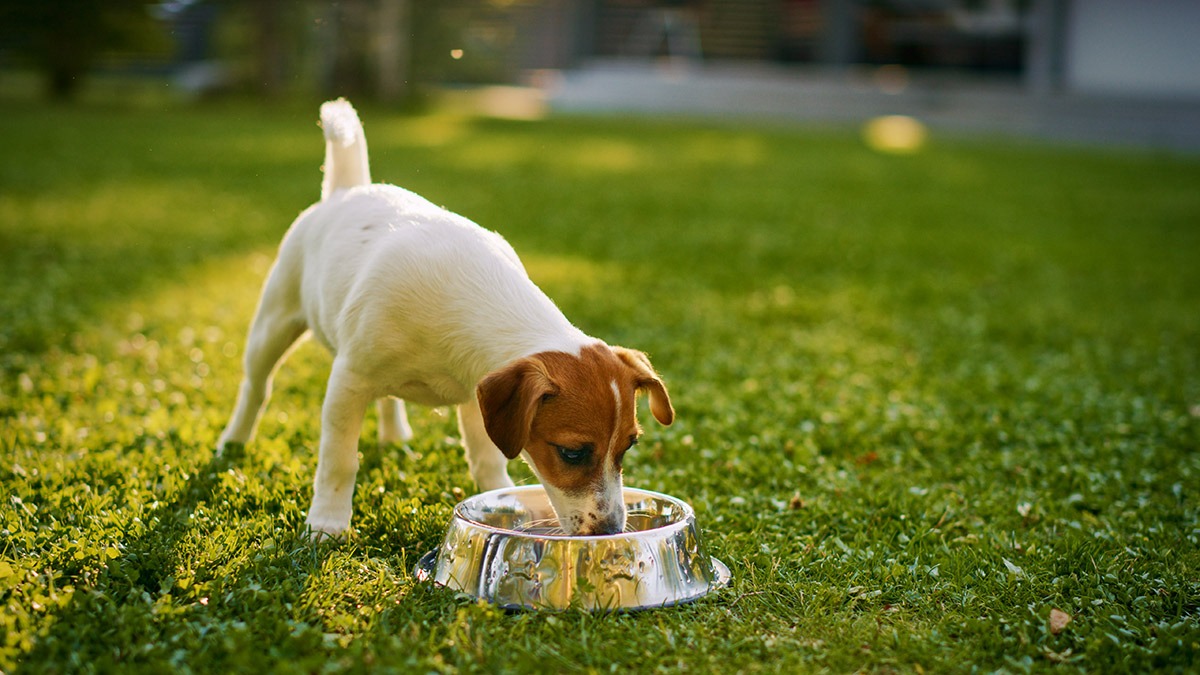Healthy
Complete and Complementary Foods for Dogs
How to Sort the Best Dog Food from the Rest
The type of feeding we choose for our canine companions, whether it be raw, cooked, dry or wet, is less important than the quality of the ingredients and in this article we will look at how to ensure the best quality and the best dog food.
Complete Dog Food
A dog food is described as complete if it fulfils the dog’s nutrient requirement when fed as the sole source of food. Dog food has to meet strict guidelines from the FEDIAF (the European Petfood Industry Federation) ‘Nutritional Guidelines for Complete and Complementary Pet Foods for Cats and Dogs.’ Generally, dog foods are formulated so that if the dog eats the right amount of energy (calories) then their nutritional requirements for all other nutrients will be met too. This, in theory, should make our lives easier but while all dog foods may meet requirements they may vary considerably in quality.
Ingredients
The ingredients list alone should not be used to assess the quality of the food because if we were to compare a budget brand with a premium brand – the ingredients list could look almost identical. However, there are a number of things on the list that can help us.
All ingredients are placed in order of weight so we really need to see meat or fish as the first ingredient on the list. This is because dogs can digest animal protein more readily than plant based protein.
Animal protein sources are classed as good quality (or high biological value) protein because they contain all of the 10 essential amino acids the dog needs. Plant based sources will usually be short of one amino acid so they would need to be combined with another source to ensure all 10 essential amino acids are present.
Many will look for a food that contains 50% protein but the percentage of protein tells us nothing about the quality of the protein in the food. We need to look at the source of the protein. For example, if the label states that the source of protein is ‘chicken meal’ rather than ‘chicken’ the protein content could have been boosted by adding bone and cartilage so although the percentage protein may look good on the label – the bone and cartilage are very poorly digested so the percentage protein that can be used by the body is actually quite low.
Another point to note when considering the ingredients list is that the way certain ingredients are presented on the label can be misleading. Manufacturers may split up different forms of similar ingredients so that they are listed separately on the label and appear further down the list. For example, the total wheat content may appear lower if it is split into ground wheat, wheat flour and wheat bran etc. if it was listed as a whole it would show that wheat contributed a large proportion of the food and may appear first on the list above the meat or fish.
Digestibility
The percentage digestibility of the food would be a very useful piece of information to have but it is rarely included on the packaging. What it tells us is how much of the nutrients are available to the dog. If a food is termed 90% digestible then most of the nutrients are available to be used by the body but if that food is only 60% digestible then we would have to feed more of this food in order for the dog to meet their requirements. In other words, what can seem like a cheaper option may actually prove more expensive compared to a higher quality food where we don’t need to offer such large portions.
It goes without saying that feeding larger amounts means more poo! Another disadvantage of poorer quality food. Also, it’s not just the quantity of poo but also whether it is formed and firm – if it is more on the loose side then it is likely that the food is of lower digestibility and therefore of lower quality.
While manufacturers don’t have to tell us the percentage digestibility– there are a few things we can look for to ensure we are feeding a highly digestible food. In the short term, this related to the ingredients and the amount needed to be fed, as discussed above. In the long term, the condition of the coat and general body composition will tell us that the food is providing a full range of nutrients.
Palatability
We know that dogs prefer foods which smell ‘meaty’ as many research studies have shown. For this reason, poorer quality dog foods may have added flavourings to make them more appealing and disguise a low meat content. Dogs select food based on smell rather than any innate ability to work out the protein/meat content! Therefore dogs may quite happily eat a poorer quality food but we need to check the label and avoid colours, preservatives and flavour enhancers!
Complementary Dog Food
This is exactly as it says, designed to complement the diet but not to be used as a sole source of nutrition.
There are many treats on the market and while we may receive information about how to look for good quality dog food- it is just as important to check the quality of the treats to ensure that they are nutrient rich and free from harmful additives.
Sone treats are provided mainly for chewing which can be very calming for the dog. In addition, chewing may help keep teeth clean and prevent a build-up of tartar. Some will eventually break down and be eaten like rawhide and Yak chews. Rawhide treats come from the inner layer of cow or horse hides. During manufacturing, the hides are cleaned and cut or ground. They are then pressed into chewable dog treats of different shapes and sizes. To make them more appealing for dogs, some rawhide treats contain beef, chicken, or liver flavourings and some may contain harmful additives so we would definitely not recommend them.
Some treats are designed to last forever like antlers. They are natural products and prepared for sale without adding any synthetic chemicals. Moose, elk, deer and reindeer all shed their antlers once a year and regrow them which means they can be collected harmlessly, and there’s a constantly renewing source. And of course, dogs absolutely love them.
Other treats provide calories and it is important that these extra calories also provide other essential nutrients. Only then can they be described as nutrient rich. Many treats simply provide what we would call ‘empty calories’ that is, calories alone with no goodness. Other treats may contain fat levels of 19% or more and similar to giving your dog shortbread! Worse, still some highly processed treats (with very long shelf lifes) may also contain colours and preservatives and traces of toxic chemicals. So it can be a bit of a minefield but here are some helpful hints to consider when choosing treats for your dog:
Handmade
Treats made by hand in small batches packed full of fresh ingredients and no added nasties are ideal. Our treats are the best out there for these reasons and we’re not just saying it, they really are a fantastic way of providing lots of nutrients over and above what your dog gets from their usual food. They are very low in fat and suitable for all dogs even those with allergies and medical conditions.
DEFRA Code
DEFRA is the Department for the Environment, Food & Rural Affairs. They will inspect the premises where the food is made and will ensure that the food is safe for consumption having undergone laboratory testing to provide a full nutritional analysis as well as indicating any contamination from food borne bacteria. If a premises is DEFRA approved they will usually be Trading Standards Approved too but it is worth checking. Trading standards officers look at recipes closely to make sure all ingredients are suitable for dogs. They will also check the hygiene practices of the bakery or production plant.
UK Ingredients
It is important that we know the provenance of the ingredients for safety reasons as well as the fact that ingredients are more nutritious if they have not travelled many miles before being used. At Dogs Delight we have made a real effort to use locally sourced ingredients.
Lastly, when choosing food and treats it is always worth remembering that those websites which ‘rate’ dog foods are based on opinions only.
We now have a facebook group: Dogs Delight Facebook Group where you can get loads of help and advice about your dogs food and nutrition – and you can share your tips too!


